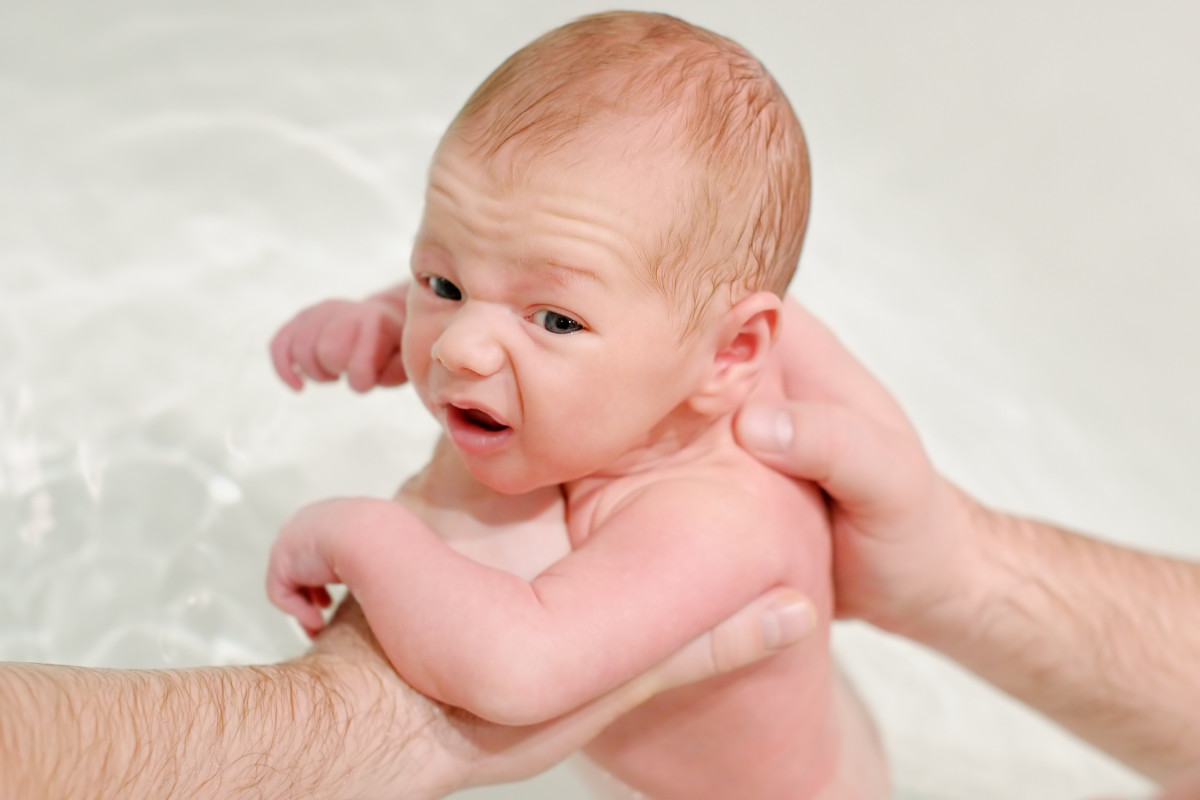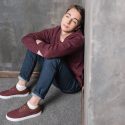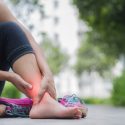
It’s very common for a newborn’s head to be elongated or have an odd shape. Babies may have an uneven head shape at birth, however this should remould to a normal, more symmetrical shape within 6 weeks after birth.
When babies are born, the bones of their skull are thin and flexible, meaning the head is soft and may change shape easily. All babies should have two soft areas at the top of their head (fontanelles). These fontanelles allow for your baby’s rapidly growing brain during infancy and usually closes around 12 months of age.
Positional plagiocephaly describes a condition where your baby’s head is not symmetrical but the fontanelle remains open. Positional plagiocephaly does not affect the development of your baby’s brain however; it may alter your baby’s physical appearance as it can cause uneven growth of their head or face. Positional plagiocephaly is a relatively common condition occurring in an estimated 10-50% of newborns.
Flattening of your baby’s head can occur when constant pressure is applied to one part of a baby’s head.
Studies have found babies to be more likely to have positional plagiocephaly if they have the following characteristics:
- First born
- Premature
- Male
- Difficult or assisted birth
- Breech positioning during the last trimester
- Other neck problems e.g. congenital muscular torticollis
- Lack of supervised tummy time when awake i.e. less than 3 times per day
- Always positioned to the same side when feeding or sleeping
If your baby has positional plagiocephaly, it is important to determine if the fontanelles have closed too early. This is a condition called craniosynostosis. It is estimated to occur in 1 /2500 live births and should be reviewed by a doctor.
Positional plagiocephaly: What can you do?
For the majority of children, positional plagiocephaly is a correctable condition. For most babies, regular repositioning of your baby’s head before they are 4 months old will result in optimal outcomes. If your baby has a flat spot, alternating their head position can improve this.
Tummy Time:
- Provide supervised “tummy time” when you baby is awake
- “Tummy time” promotes normal shaping of the back the head, it also helps babies to strengthen their neck muscles and learn to push up on their arms, which helps develop the muscles needed for crawling and sitting up.
- Looking around from a new perspective encourages your baby’s learning and discovery of the world. Move toys around to keep your baby active and stimulated.
Side Positioning for Play:
- When awake and you are supervising them, place your baby on their side to play
Hold your baby more often or consider an appropriate sling
- Pick up and hold your baby in an upright position. This will take pressure off the head and may help with development of neck muscle strength and head control. By reducing the amount of time your child spends lying in a position where the head is resting against a flat surface (such as in car seats, strollers, swings and bouncy seats). For instance, if your baby has fallen asleep in a car seat during travel, take your baby out of the seat when you get home rather than leaving your little one snoozing in the seat.
Sleeping Position
- Sleeping on the back is the best position for babies to reduce the risk of SIDS. There has been an 80 per cent reduction in SIDS deaths since the introduction of prevention campaigns in 1997 that encouraged parents to place sleeping infants on their back.
- Although your baby is on their back try to alternate your baby’s head position for each sleep: for one sleep turn your baby’s head to their left side and then the next sleep turn your baby’s head to their right side.
- Whichever side of your infant’s head is flattened, you will want to position your baby to encourage active turning of the head to the other side.
- Scientific evidence and SIDS do NOT approve of wedge pillows and other devices to keep your baby in one position as per the guidelines athttps://rednose.com.au/article/pillow-use
- The Australian government states it is safer not to use a pillow at all for children under two15.
- More information on SIDS guidelines can be found at https://rednose.com.au/section/safe-sleeping
Corrective Helmet
- Sometimes when the uneven head shape is more severe or where counter positioning did not work, a cranial remodelling helmetmay help. For children where this treatment is necessary, it is important to see a craniofacial specialist team through your local Childrens Hospital. Treatment is provided by a team specialising in this service, helmets are custom made and adjusted by the orthotist every one to two weeks and treatment usually takes between two to six months.
- Neverpurchase or use any helmet or head shaping devices without first having your child seen by a doctor. Only a small percentage of babies wear helmets. The decision to use helmet therapy is made on an individual assessment and case-by-case basis by the team and child’s family.
Key Points to Remember
- Babies may have an uneven head shape at birth however this should remould to a normal more symmetrical shape within 6 weeks after birth.
- Positional plagiocephaly will not affect the development of your baby’s brain.
- If you are concerned about your baby’s head shape, talk to your Child Health Nurse, GP, paediatrician or paediatric physiotherapist.
- A paediatric physiotherapist can assess your child and assist with planning a home program which may include specific exercises, stretches and promotion of a variety of positions during awake, sleep and play time.
- Few baby’s require helmet therapy.
References:
- http://www.essentialbaby.com.au/baby/baby-sleep/sids-safe-sleeping-guidelines-20081201-6oek#ixzz4hOfggbXn
Australian Competition and Consumer Commission. (2007) Cots. Safety Alert Brochure. Retrieved from http://bit.ly/RpYpA1. - https://rednose.com.au/section/safe-sleeping
- https://www.physiotherapy.asn.au/APAWCM/Physio_and_You/Infants.aspx
- http://www.rch.org.au/kidsinfo/fact_sheets/Plagiocephaly_misshapen_head/
- https://www.schn.health.nsw.gov.au/parents-and-carers/our-services/craniofacial/chw
- http://www.mayoclinic.org/diseases-conditions/craniosynostosis/symptoms-causes/dxc-20256926








